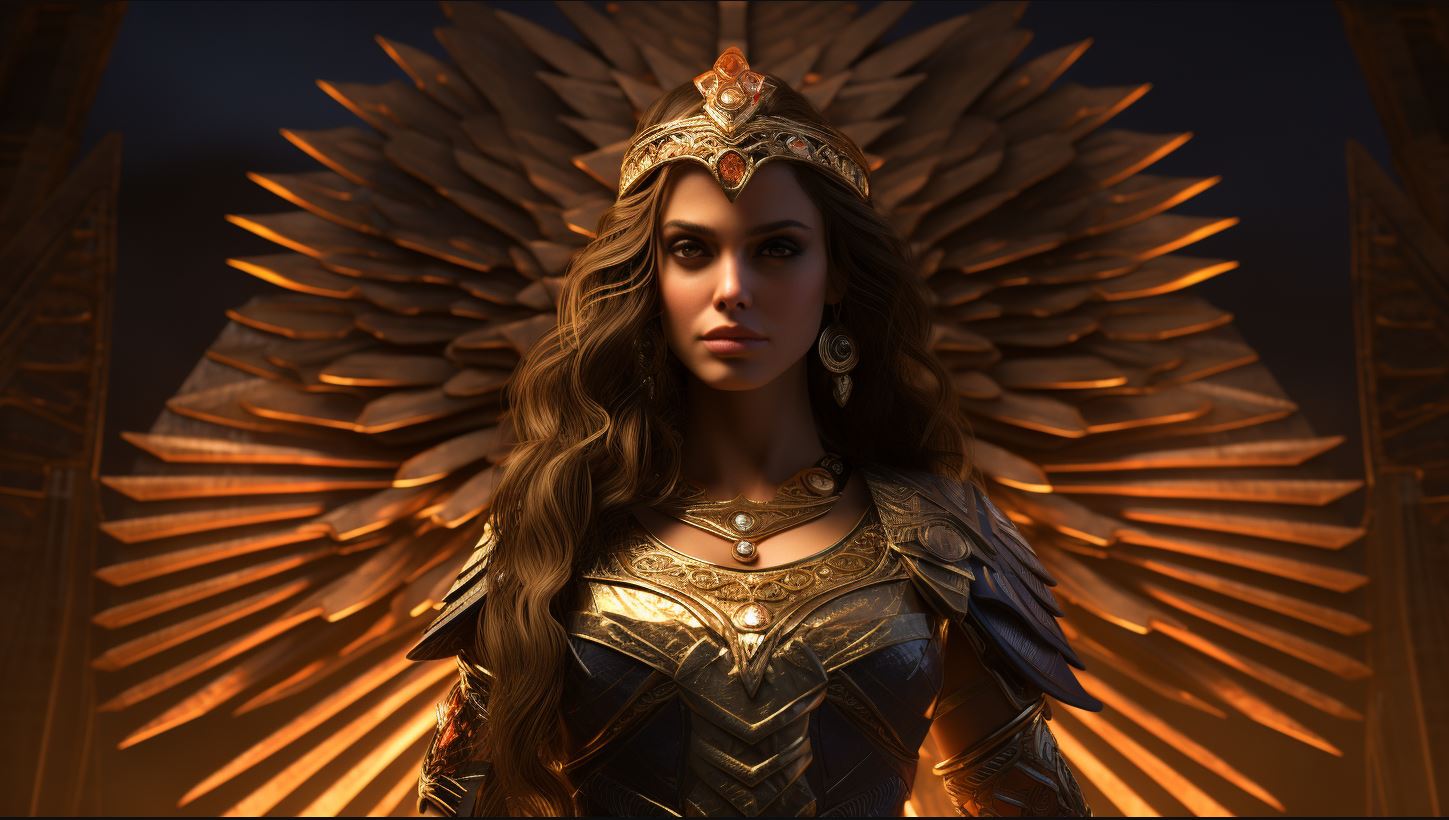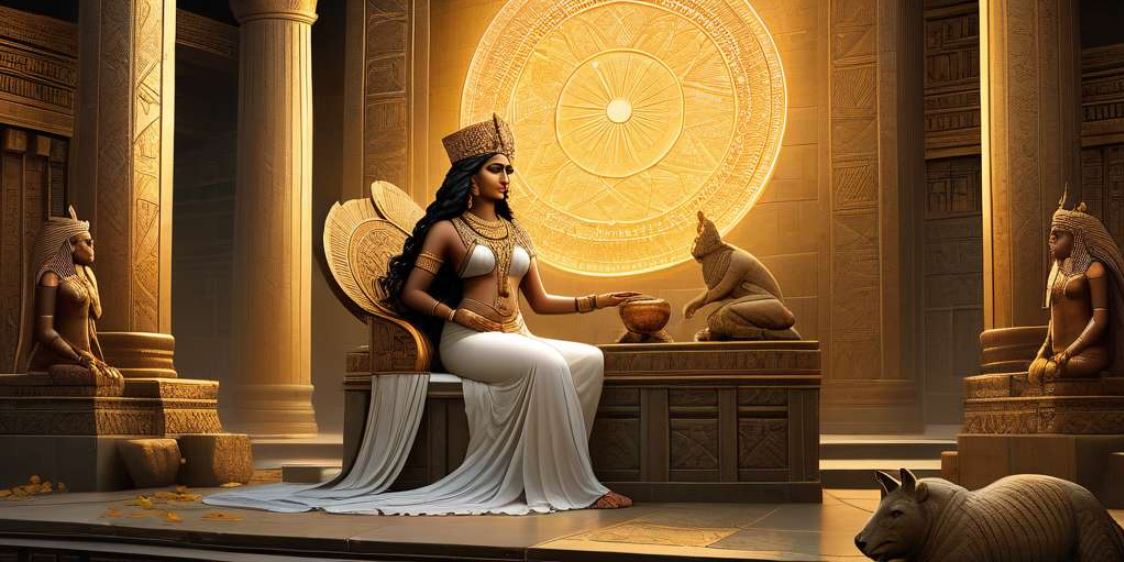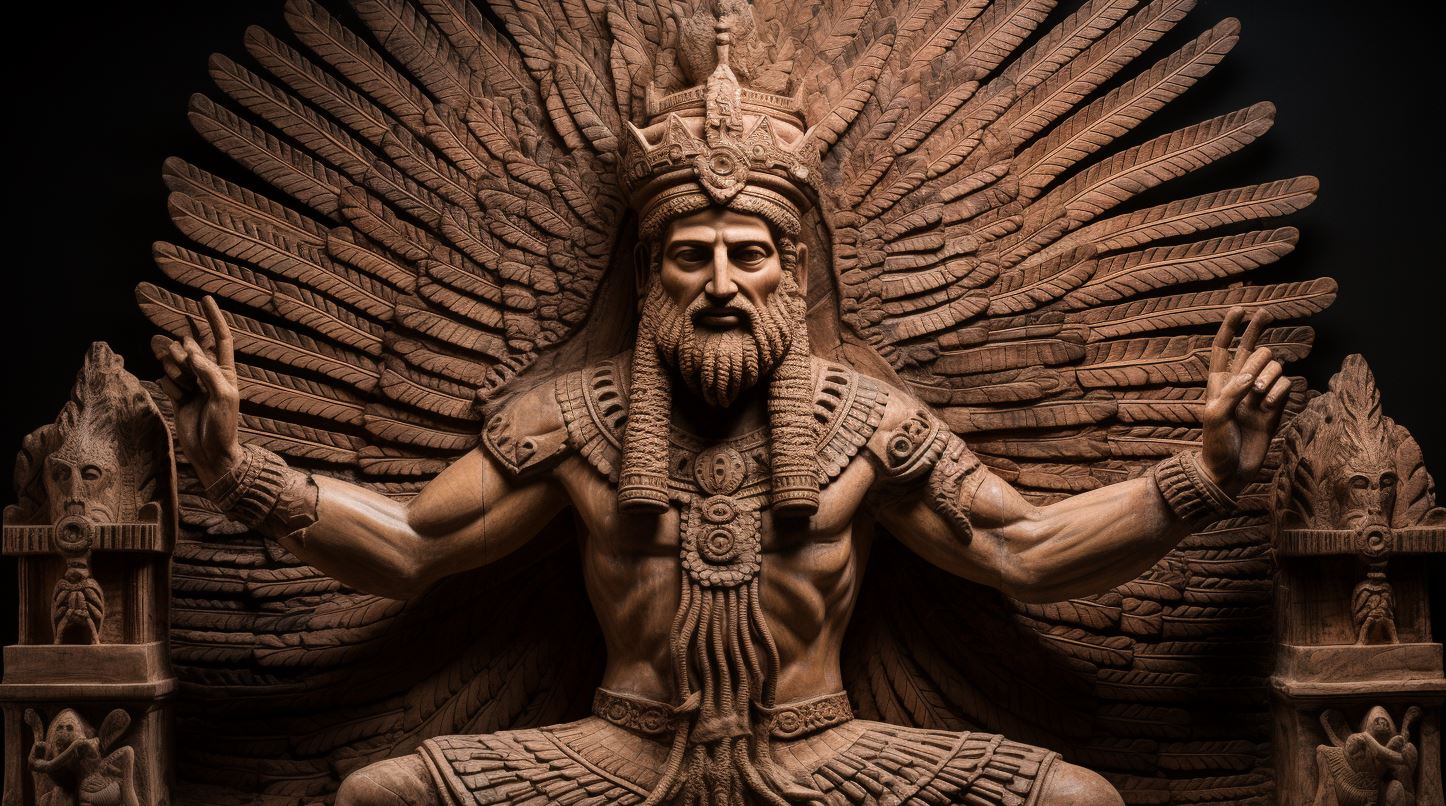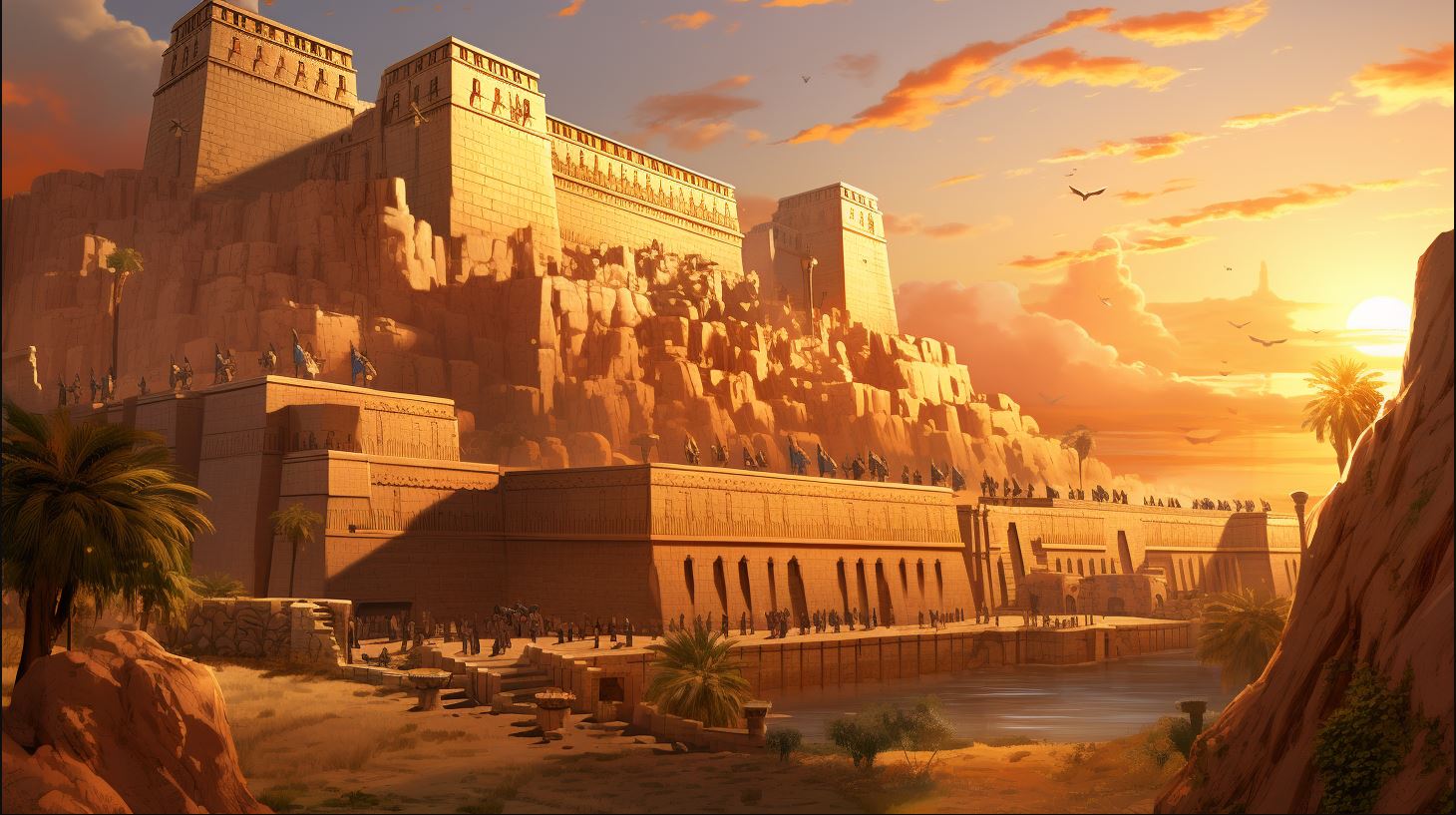Nisaba: The Revered Sumerian Goddess and her Significance in Ancient Mesopotamia

Nisaba, the revered Sumerian goddess, holds a significant place in ancient Mesopotamian mythology. She is recognized as the goddess of grain and scribes, symbolizing abundance and knowledge. Nisaba’s presence can be found in various ancient texts and artwork, showcasing her importance in religious and cultural practices.
Her worship continued and evolved during the Babylonian period, and her connections to other Sumerian deities offer insights into complex relationships within the pantheon. Researchers can explore Nisaba’s fascinating role further through valuable resources like the Electronic Text Corpus of Sumerian Literature.
Overview of Nisaba Sumerian Goddess
The Nisaba Sumerian goddess holds immense significance in ancient Mesopotamian mythology. Revered as the deity of grain and scribes, Nisaba embodies the concepts of abundance and knowledge. As one delves into the rich tapestry of Sumerian mythology, Nisaba’s role becomes even more captivating.
In ancient texts and artwork, Nisaba is often depicted alongside her sacred symbols, representing the vital connection between agriculture and the intellectual pursuits of writing. Her profound influence extended beyond grain and scribes, intertwining with other Sumerian deities, revealing the intricate relationships within the pantheon.
The worship of Nisaba endured even during the Babylonian period, adapting and evolving while maintaining her core significance. Exploring her connections to other deities sheds light on the cultural and spiritual fabric of ancient Mesopotamia.
By studying Nisaba’s representation in ancient texts and artwork, researchers gain invaluable insight into the beliefs and devotion of ancient civilizations. Furthermore, her relationship with the deity Sud provides a fascinating avenue for exploration.
The Electronic Text Corpus of Sumerian Literature serves as a valuable resource for researchers and scholars interested in delving deeper into the mysteries surrounding Nisaba. Through its comprehensive collection of texts, a more profound understanding of her role in ancient Mesopotamia can be achieved.
The Role of Nisaba in Ancient Mesopotamian Mythology
In ancient Mesopotamian mythology, Nisaba played a significant role as the goddess of grain and scribes. She was revered for her association with abundance and knowledge, aspects that were crucial to the survival and prosperity of civilizations in that time period.
As the goddess of grain, Nisaba oversaw the fertility and growth of crops, ensuring bountiful harvests for the people.
Additionally, Nisaba held an important position as the goddess of scribes, symbolizing the wisdom and skill required for writing and record-keeping.
She was believed to inspire and guide the work of scribes, providing them with the necessary knowledge and expertise. Nisaba’s presence in the realm of scribes further emphasized the crucial role of literacy and documentation in ancient Mesopotamian society.
The worship of Nisaba as both the goddess of grain and scribes highlights the interconnectedness of agriculture and knowledge in the ancient Mesopotamian worldview. Through her dual roles, Nisaba embodied the symbiotic relationship between the natural world and human intellectual pursuits.
Ancient Mesopotamian texts and artworks depict Nisaba in various forms, often adorned with symbols of grain and writing implements. These representations further reinforce her significance and the veneration she received in the civilization of that time.
Symbolism and Worship of Nisaba as the Goddess of Grain and Scribes
In ancient Mesopotamian mythology, Nisaba played a vital role as the goddess of grain and scribes. She was deeply associated with fertility, agriculture, and the abundance of crops. As the goddess of grain, Nisaba symbolized the sustenance and nourishment provided by the harvest, which was crucial for the survival of the people.
Furthermore, Nisaba was also revered as the goddess of scribes and writing. She was believed to be the source of knowledge and wisdom, bestowing creativity and intellectual prowess upon those who sought her favor.
The ancient Mesopotamians credited Nisaba with guiding the scribes’ hands and inspiring them in their craft.
Worship of Nisaba involved intricate rituals and offerings to seek her blessings for prosperous harvests and literary endeavors.
The temples dedicated to Nisaba were significant centers of learning and scholarship, where scribes received education and training.
- Nisaba’s symbolism as the goddess of grain and scribes emphasized the vital connection between sustenance and knowledge in ancient Mesopotamian society.
- Her worship reflected the importance of agriculture and record-keeping in ensuring the well-being and advancement of the community.
- Through rituals and offerings, people sought Nisaba’s favor to gain agricultural prosperity and develop intellectual prowess.
The worship of Nisaba represented the profound reverence for the dual aspects of sustenance and knowledge, which were essential for the flourishing of ancient Mesopotamian civilization.
Nisaba’s Connection to Other Sumerian Deities
In Sumerian mythology, Nisaba, the goddess of grain and writing, had significant connections with other deities within the pantheon. She was often depicted alongside her husband Haya, the god of storehouses, indicating their intertwined roles in ensuring agricultural abundance and prosperity.
One of the notable connections was with the god Enki, the deity of wisdom and sweet waters. Nisaba served as Enki’s scribe and advisor, reflecting her association with knowledge and intellectual pursuits.
This partnership showcased the importance of both grain and wisdom in Sumerian society.
Additionally, Nisaba had a close relationship with Ninlil, the goddess of the air and wind. Together, they played vital roles in the fertility of the land , with Ninlil providing the necessary wind to carry the pollen, while Nisaba ensured the growth of crops through her influence over grain.
Furthermore, Nisaba’s connection extended to her sister, Nidaba, who was also associated with writing and knowledge. The two goddesses complemented each other, with Nisaba embodying the practical aspects of scribes and grain, while Nidaba represented the more artistic and creative aspects of literature and writing.
These intricate interconnections between Nisaba and other Sumerian deities underscore the integral role she played in the pantheon, bridging the realms of agriculture, knowledge, and divine order.
The Representation of Nisaba in Ancient Texts and Artwork
Through ancient texts and artwork, the representation of Nisaba, the revered Sumerian goddess, comes to life, providing insights into her significance and role in ancient Mesopotamian culture.
Texts such as hymns, prayers, and incantations often describe Nisaba as a divine figure associated with knowledge and wisdom. She is depicted in poetic compositions as a powerful entity who bestows her blessings upon those who seek her guidance.
In artwork, Nisaba is often portrayed as a regal goddess, adorned with symbols of her domains. She is shown holding a stylus and a tablet, emphasizing her role as the goddess of scribes and writing.
These representations highlight her association with education, record-keeping, and scholarly pursuits. Nisaba’s presence in ancient seals and reliefs further reinforces her significance as a patron of scribes and learning.
Additionally, Nisaba is often depicted with agricultural motifs, symbolizing her role as the goddess of grain and abundance.
Fish, birds, and sheaves of wheat are commonly featured in artwork alongside her, representing fertility, prosperity, and the bountiful harvest she brings. These visual representations connect Nisaba to the vital agricultural practices that sustained ancient Mesopotamian societies.
The careful study and analysis of ancient texts and artwork not only highlight Nisaba’s prominent role within the pantheon but also provide valuable cultural context and a deeper understanding of her worship and influence in ancient Sumerian society.
Nisaba in the Babylonian Period: Continuity and Evolution of Worship
During the Babylonian period, the worship of Nisaba, the Sumerian goddess of grain and scribes, continued with notable developments. Alongside her traditional roles, Nisaba’s influence expanded to reflect the changing dynamics of the era.
The Babylonians recognized her as the patroness of learning, wisdom, and record-keeping, aligning her divine status with the rapidly evolving society’s emphasis on education and bureaucracy. This expanded role is evident in numerous inscriptions and texts referring to Nisaba’s guidance in matters of scholarship, especially within the priestly class.
Nisaba’s evolution in the Babylonian period also witnessed an increase in the construction and dedication of temples in her honor. These temples served as centers of learning, where scribes and scholars gathered to study and pay homage to the goddess.
Additionally, rituals and festivals celebrating Nisaba became more elaborate and widespread, emphasizing her crucial role in maintaining prosperity and intellectual pursuits.
As Babylonian influence spread throughout the region, Nisaba’s veneration extended beyond the city of Sumer. Her cult became integrated into the broader Mesopotamian religious landscape, further solidifying her significance as a revered and essential deity.
The continuity of devotion to Nisaba through this period exemplifies her enduring importance and adaptability as the goddess of both agriculture and knowledge.
Nisaba and Sud: Exploring the Relationship between Two Ancient Texts
Delving into the ancient texts, researchers have uncovered a fascinating relationship between Nisaba, the Sumerian goddess of grain and scribes, and Sud, a prominent deity in Sumerian mythology.
Both Nisaba and Sud are mentioned in various texts, shedding light on their intertwined significance.
One such text is the famous “Hymn to Nisaba and Sud,” which praises their divine attributes and highlights their complementary roles.
Sud, known as the god of justice and righteousness, is often depicted as Nisaba’s son or consort. This connection suggests a deep spiritual partnership between the two deities.
Furthermore, other Sumerian texts, such as the “Lament for Nisaba and Sud,” explore their shared narrative and the dramatic events that unfolded in their divine realm.
This poetic lament captures the emotional aspect of their relationship, revealing the complexities and depths of their mythology.
The study of these ancient texts provides invaluable insights into the interplay between Nisaba and Sud, offering a glimpse into their shared stories and unique roles within Sumerian mythology.
By examining their relationship, researchers can better understand the broader tapestry of beliefs and the intricate connections within the pantheon of gods worshiped in ancient Mesopotamia.




















